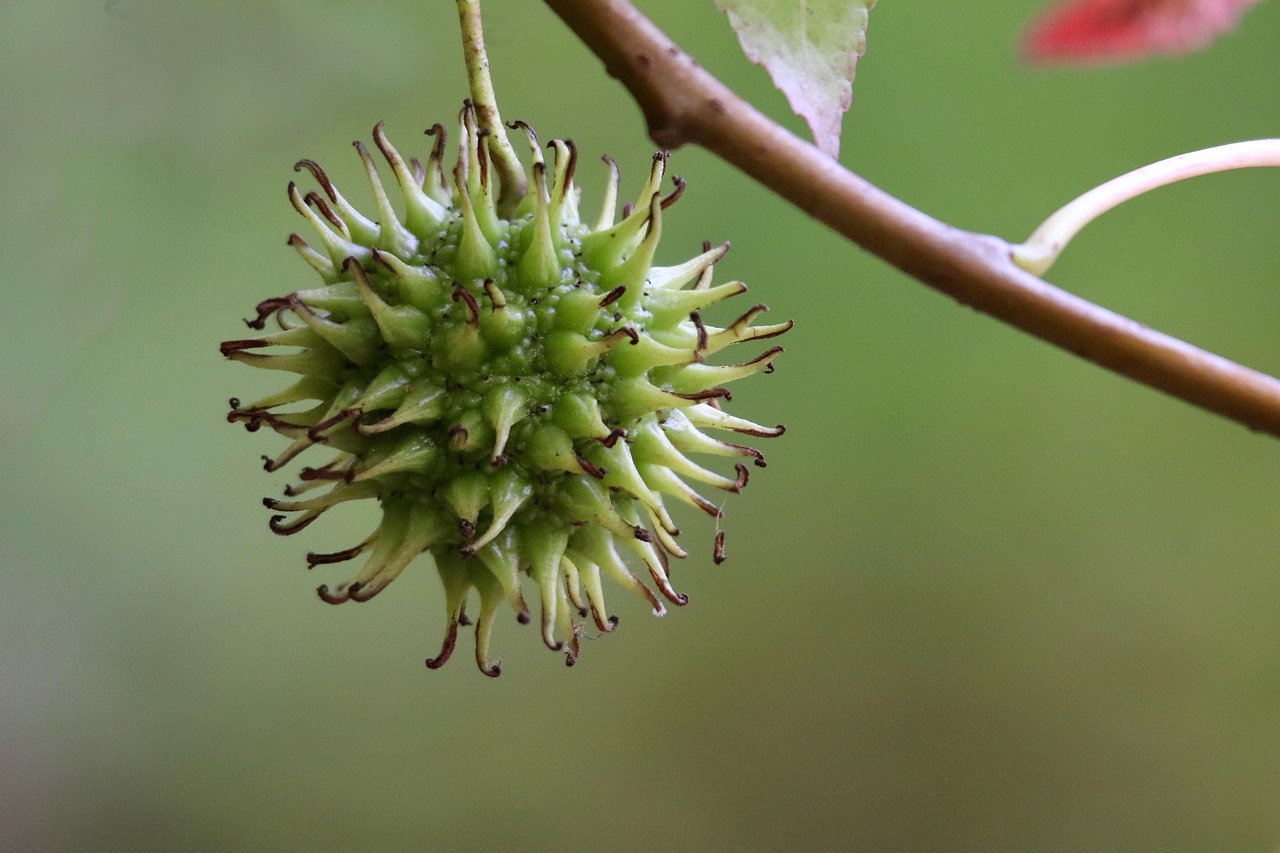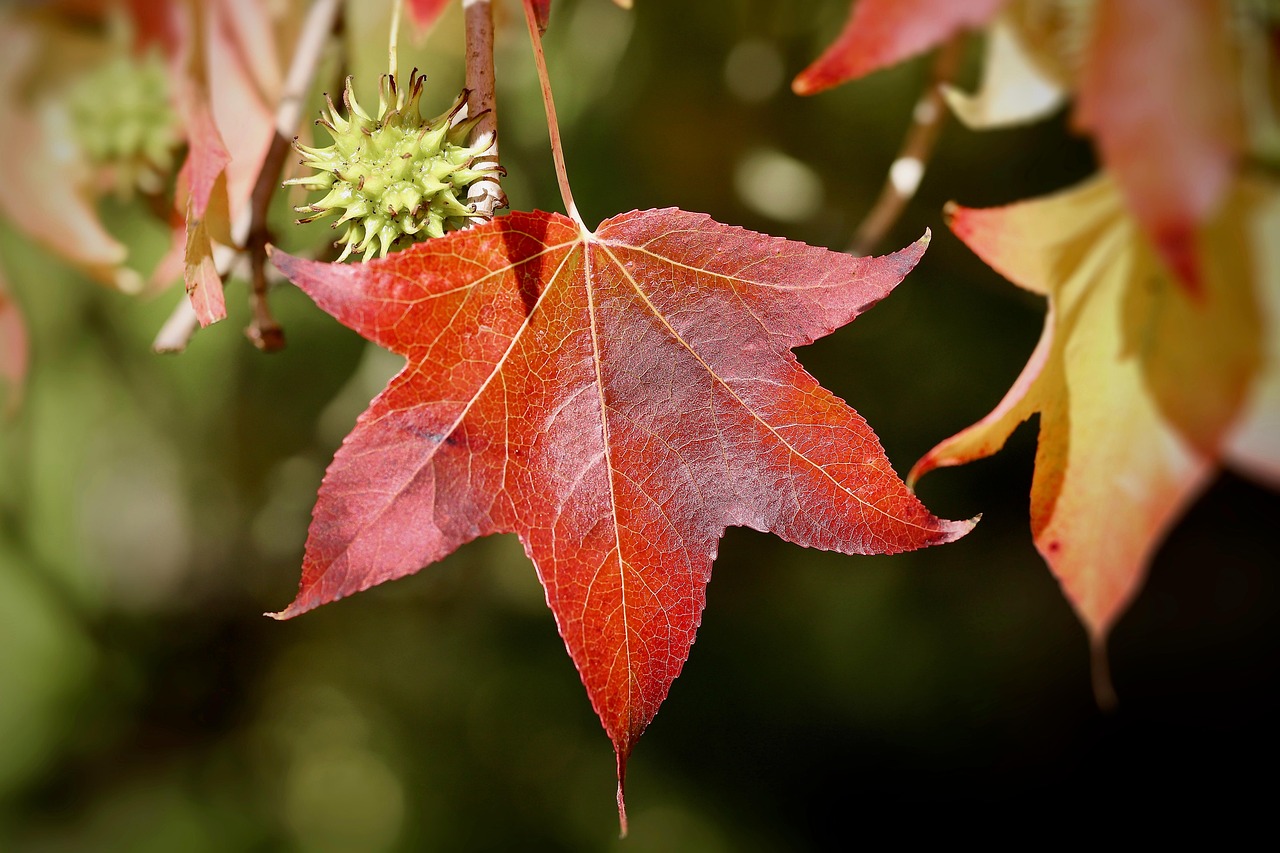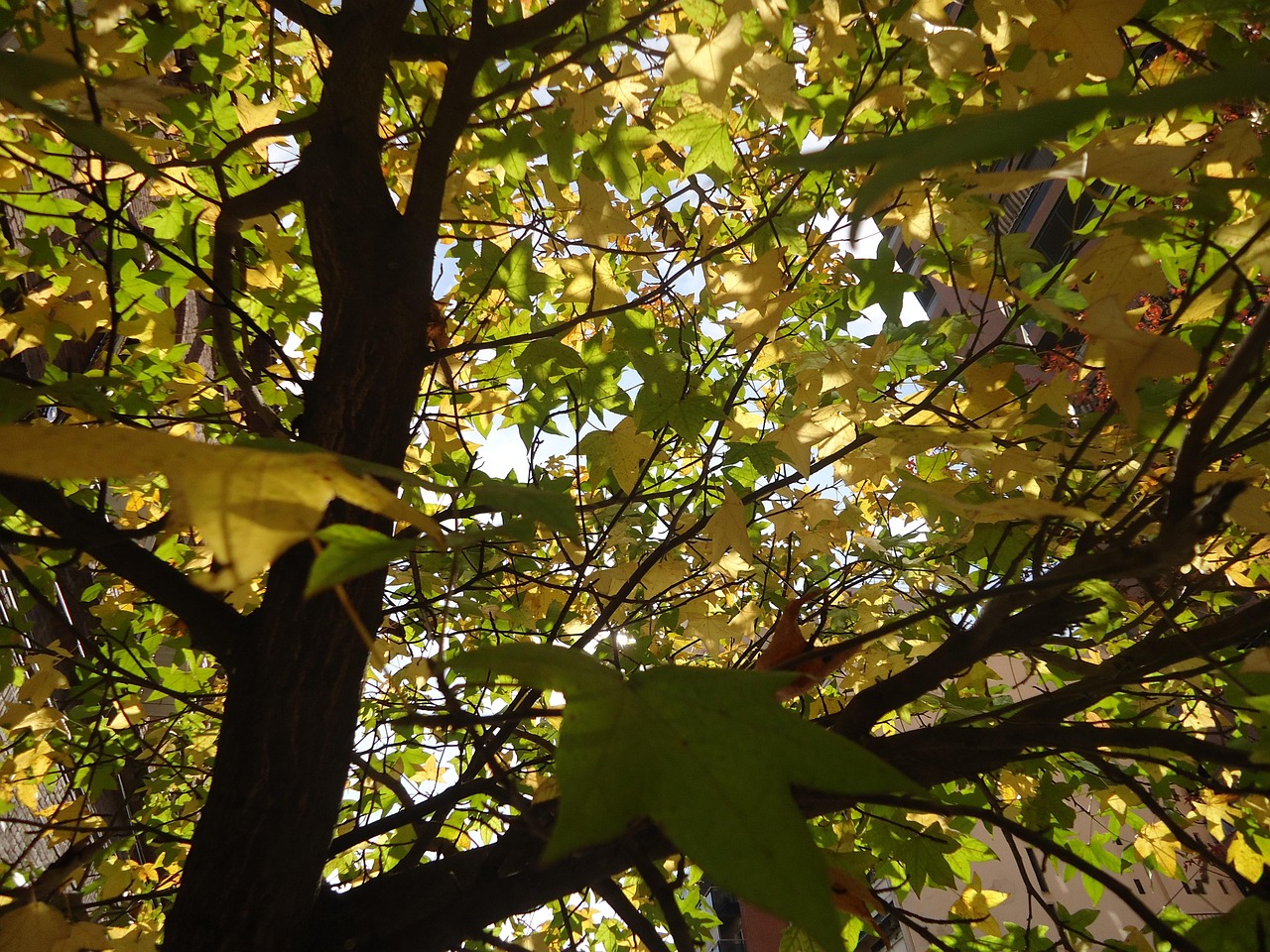Sweetgum trees are often considered a mixed blessing for yards. While they provide beautiful fall foliage and shade, they also produce spiky seed balls that can be a nuisance. Their suitability for landscaping depends on individual preferences and yard conditions.
Understanding Sweetgum Trees

Sweetgum trees, scientifically known as Liquidambar styraciflua, are native to the southeastern United States. They are well-known for their distinctive star-shaped leaves and stunning autumn colors, ranging from yellow to deep purple. These trees can grow quite tall, reaching heights of 60 to 100 feet, making them a significant presence in any landscape.
These deciduous trees thrive in a variety of soil types but prefer moist, well-drained areas. They are commonly found in forests, parks, and urban settings. Their adaptability to different environments contributes to their popularity among homeowners looking to enhance their yards.
Benefits of Sweetgum Trees
Sweetgum trees offer several benefits that make them appealing for landscaping:
- Aesthetic Appeal: The vibrant fall colors and unique leaf shape make sweetgum trees visually striking.
- Shade Provider: Their expansive canopies provide ample shade, making outdoor spaces more comfortable during hot months.
- Wildlife Habitat: These trees attract various birds and insects, contributing to local biodiversity.
- Wind Resistance: Sweetgum trees are known for their sturdy structure, which allows them to withstand strong winds.
Challenges of Growing Sweetgum Trees
Despite their advantages, sweetgum trees also present certain challenges:
- Seed Balls: The spiky seed balls produced in the fall can create a significant mess on lawns and driveways.
- Invasive Roots: Sweetgum trees can develop extensive root systems that may interfere with nearby structures or other plants.
- Poor Longevity: In urban settings, sweetgum trees may have a shorter lifespan due to pollution and soil compaction.
- Pest Issues: These trees can attract pests like aphids, which can lead to sticky residue on surfaces below.
Key Characteristics of Sweetgum Trees
The characteristics of sweetgum trees are essential for potential homeowners to consider before planting. Below is a table summarizing key features:
| Characteristic | Details |
|---|---|
| Height | 60 to 100 feet |
| Width | 30 to 50 feet |
| Growth Rate | Moderate to fast |
| Leaves | Star-shaped, green turning to colorful shades in fall |
| Hardiness Zones | Zones 5 through 9 |
The sweetgum tree’s unique features make it an intriguing option for landscaping. Understanding both the benefits and challenges can help homeowners decide if this tree is the right fit for their yard. The balance between its beauty and the maintenance required is essential for making an informed choice.
Planting and Caring for Sweetgum Trees
To ensure that sweetgum trees thrive in your yard, it is essential to understand their planting and care requirements. Proper attention during the establishment phase can lead to a healthy tree that enhances your landscape for years to come.
Optimal Planting Conditions
Sweetgum trees prefer specific conditions for planting to flourish. Here are some critical factors to consider:
- Soil Type: They thrive in moist, well-drained soils but can adapt to various soil types. Sandy loam or clay loam works best.
- Sunlight: Sweetgum trees require full sun for optimal growth. Aim for at least six hours of direct sunlight each day.
- Spacing: When planting multiple trees, space them about 30 to 50 feet apart to allow for proper growth and airflow.
- Watering: Young trees need regular watering, especially during dry spells. Ensure the soil remains consistently moist but not waterlogged.
Steps for Planting Sweetgum Trees
Follow these steps for successful planting:
- Select a Site: Choose a location with adequate sunlight and good drainage.
- Prepare the Soil: Clear the area of weeds and debris. Loosen the soil to help roots establish easily.
- Dig a Hole: Dig a hole that is two to three times wider than the root ball and just as deep.
- Position the Tree: Place the tree in the center of the hole. Ensure that the top of the root ball is level with the surrounding soil.
- Backfill: Fill the hole with soil, gently tamping it down to eliminate air pockets.
- Water Thoroughly: After planting, water the tree well to help settle the soil around the roots.
- Mulch: Apply a layer of mulch around the base of the tree, keeping it away from the trunk. This helps retain moisture and suppress weeds.
Pest and Disease Management
Sweetgum trees can be susceptible to various pests and diseases. Awareness of these issues can help in prompt management and care:
Common Pests
The following pests are commonly associated with sweetgum trees:
- Aphids: These small insects suck sap from leaves, leading to yellowing and curling. They can also produce a sticky residue known as honeydew.
- Scale Insects: Scale can weaken trees by feeding on sap. They appear as small, shell-like structures on branches and leaves.
- Caterpillars: Certain caterpillars may feed on sweetgum leaves. While they usually do not cause severe damage, heavy infestations can harm young trees.
Diseases to Watch For
Diseases can also affect sweetgum trees. The two most common are:
- Powdery Mildew: This fungal disease appears as white powdery spots on leaves, affecting photosynthesis and overall vigor.
- Canker Diseases: Cankers may develop on branches, leading to dieback. Look for sunken areas on the bark as an indication of this problem.
Management Strategies
Effective management strategies include:
- Regular Inspection: Frequently check your sweetgum trees for signs of pests or diseases.
- Cultural Practices: Maintain proper watering and fertilization practices to promote tree health.
- Pest Control: Use insecticidal soap or neem oil for pest control when necessary. Always follow label instructions for safe application.
- Disease Prevention: Remove any infected branches promptly to prevent disease spread.
By understanding how to plant, care for, and manage potential issues with sweetgum trees, homeowners can enjoy their beauty while minimizing challenges. These practices ensure that sweetgum trees remain a vibrant part of your landscape for years to come.

Environmental Impact of Sweetgum Trees
Sweetgum trees can play a significant role in the environment, contributing positively to local ecosystems. Understanding their environmental impact helps homeowners appreciate their value beyond mere aesthetics.
Carbon Sequestration
Like many trees, sweetgum trees are effective at sequestering carbon dioxide. This process is essential for mitigating climate change. Here are some key points:
- Carbon Absorption: Sweetgum trees absorb carbon dioxide from the atmosphere during photosynthesis, storing carbon in their biomass.
- Long Lifespan: The longer a tree lives, the more carbon it can capture. Sweetgums can live for several decades, making them valuable for long-term carbon storage.
- Urban Carbon Sinks: In urban areas, sweetgum trees help offset emissions from vehicles and industries, contributing to cleaner air.
Biodiversity Enhancement
Sweetgum trees provide habitat and food for various wildlife species, enhancing local biodiversity:
- Birds: Their sturdy branches offer nesting sites for birds. Many species are attracted to the seeds produced by sweetgum trees.
- Insects: Sweetgum trees support a variety of insects, including pollinators like bees and butterflies.
- Mammals: Small mammals may forage around sweetgum trees for seeds and shelter, contributing to the local food web.
Landscape Design Considerations

When incorporating sweetgum trees into landscape designs, several factors should be considered to maximize their benefits while minimizing potential drawbacks.
Strategic Placement
The placement of sweetgum trees is critical for successful landscaping:
- Shade Areas: Plant sweetgums near patios or outdoor spaces where shade is desired. Their large canopies can provide relief from the sun.
- Windbreaks: They can serve as effective windbreaks when planted in rows, reducing wind speed and protecting other plants.
- Spacing from Structures: Maintain adequate distance from buildings or sidewalks to prevent root invasion and avoid damage from falling seed balls.
Complementary Planting
Selecting the right companion plants can enhance the beauty and health of sweetgum trees:
- Understory Plants: Consider planting shade-tolerant shrubs or perennials beneath sweetgum trees to create a layered look.
- Diversity: Mixing sweetgums with diverse tree species can promote a healthier ecosystem and reduce pest issues.
- Ground Covers: Using ground cover plants can help suppress weeds and retain moisture in the soil around the tree.
Caring for Sweetgum Trees in Different Seasons
The care needed for sweetgum trees varies throughout the year. Understanding seasonal requirements helps ensure their health and vitality.
Spring Care
Spring is a critical time for growth and development:
- Fertilization: Apply a balanced fertilizer in early spring to support new growth.
- Mulching: Refresh mulch around the base to retain moisture and suppress weeds.
- Pest Monitoring: Inspect for early signs of pests as the weather warms up, allowing for prompt action if needed.
Summer Care
The summer months require ongoing attention:
- Watering: Ensure regular watering during dry spells, especially for young trees.
- Pruning: Summer is a good time for light pruning to maintain shape and remove any dead or damaged branches.
- Pest Control: Keep an eye out for aphids or scale insects, using organic treatments as necessary.
Fall and Winter Care
The fall marks the end of growth, while winter care is essential for protection:
- Leaf Cleanup: Rake fallen leaves to prevent fungal diseases and keep the area tidy.
- Winter Protection: For young trees, consider wrapping trunks with burlap to protect against cold temperatures.
- Planning for Spring: Take note of any issues that arose during the year to address them in the spring.
Caring for sweetgum trees through each season helps maintain their health and enhances their contributions to your yard. By understanding their needs, homeowners can create a thriving landscape that benefits both people and the environment.
Community and Aesthetic Contributions
Beyond their ecological benefits, sweetgum trees also contribute significantly to community aesthetics and human well-being. Their presence can transform a neighborhood, providing a sense of place and enhancing property values.
Enhancing Property Value
Well-placed trees, including sweetgum trees, can increase property values. Here are some reasons why:
- Visual Appeal: Trees enhance the landscape’s beauty, making homes more attractive to potential buyers.
- Shade Benefits: Properties with mature trees often have lower cooling costs in summer, making them more desirable.
- Community Pride: Neighborhoods with abundant greenery foster pride among residents, encouraging further investment in properties.
Creating Natural Spaces
Sweetgum trees also play a role in creating inviting outdoor spaces:
- Gathering Spaces: Their broad canopies provide shade for picnics and gatherings, promoting community interaction.
- Play Areas: Families can utilize areas under sweetgum trees for children’s play, enhancing outdoor activity.
- Wildlife Observation: By attracting birds and other wildlife, sweetgum trees create opportunities for nature observation and education.
Considerations for Homeowners

While sweetgum trees offer many advantages, homeowners should carefully consider their specific yard conditions and preferences before planting. Here are essential factors to keep in mind:
Evaluate Yard Space
Before planting a sweetgum tree, assess your yard space:
- Available Area: Ensure there is enough space for the tree to grow, both above and below ground.
- Proximity to Structures: Consider the distance from buildings, fences, and other trees to prevent future issues with roots or falling branches.
Personal Preferences
Your preferences regarding maintenance are also crucial:
- Mess Factor: If fallen seed balls and leaves are a concern, you may want to weigh the aesthetic benefits against the maintenance required.
- Allergies: Some individuals may have allergies to certain tree species. Always consider family health when selecting plants.
Final Thoughts
Sweetgum trees present a unique blend of beauty, ecological benefits, and challenges for homeowners. Their stunning fall colors and ability to provide shade make them an attractive choice for many yards. However, potential homeowners should consider their specific landscaping needs and maintenance capabilities before planting.
The decision to include sweetgum trees in your yard ultimately depends on personal preferences and local conditions. With proper care and understanding of their characteristics, sweetgum trees can thrive and enhance your landscape for generations. By weighing the pros and cons and considering individual yard dynamics, homeowners can make informed choices that will benefit both their property and the environment.
In conclusion, sweetgum trees can be a valuable addition to your yard if their unique traits align with your landscaping goals. Whether you seek beauty, environmental advantages, or community enhancement, these trees offer numerous benefits worth considering.
